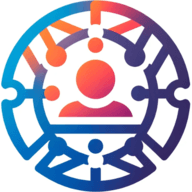7 Best Methods for Communicating Expectations to Temporary Staff
In the fast-paced world of temporary staffing, how can organizations clearly communicate expectations and responsibilities? This article explores seven effective methods to ensure temporary staff are well-informed and productive. From combining digital tools with mentorship to encouraging regular feedback sessions, discover actionable insights that can transform your approach. Read on to uncover these strategies and more, brought to you by industry professionals.
- Combine Digital Tools With Mentorship
- Conduct Orientation Meetings
- Use Visual Aids
- Offer Written Summaries
- Provide Online Training Modules
- Establish a Point of Contact
- Encourage Regular Feedback Sessions
Combine Digital Tools With Mentorship
At GoTreeQuotes.com.au, I've developed a hybrid approach to onboarding temporary staff that combines digital tools with personal mentorship. We utilize a custom-built digital platform that provides comprehensive information on roles, responsibilities, and company policies. This system includes interactive elements to ensure a thorough understanding of our unique arboricultural requirements and Australian tree-care standards.
The cornerstone of our method is pairing each temporary worker with an experienced team member for their initial period. This mentor offers immediate, context-specific guidance and demonstrates our specialized processes for tree assessment and quote generation. We supplement this with concise daily check-ins to address queries and provide targeted feedback. This personalized strategy, integrated with our digital resources, has markedly enhanced the efficiency and accuracy of our temporary workforce, particularly in navigating the complexities of Australian tree regulations and species-specific care requirements.

Conduct Orientation Meetings
Hi,
I'm Fawad Langah, a Director General at Best Diplomats organization specializing in leadership, business, global affairs, and international relations. With years of experience writing on these topics, I can provide valuable insights to help navigate complex issues with clarity and confidence.
Here is my answer:
It has become my practice to ensure that expectations or assignment responsibilities for temporary staff are very clear. My most recommended approach is to conduct an orientation meeting. In this particular meeting, I explained in detail what each of them is expected to do. I also greatly stress the role of coordination in the group and the entire organization.
In addition to the meeting, I use a simple and effective tool: a written checklist. This checklist contains activities, timelines, and any other activities that may occur within a given day. That is why it can be used as a quick guide for temporary employees, giving them an idea of what is expected of them.
We also ensure that our culture supports people sharing information with each other. Temporary staff can contact us anytime they wish with questions or for further explanation concerning a matter. This provides the support they need and reiterates our belief in their success.
Finally, updates and feedback go through the intranet communication channel we developed. In a way, it enables me to give out crucial information and also, at the same time, disperse every single piece of information swiftly.
In availing facial communication, written resources, and ongoing support, there is a positive impact of face-to-face communication in setting up expectations and responsibilities for the temporary staff of Taskroid. As such, by catering to simplicity and support, we enable them to impact our organization positively.
I hope my response proves helpful! Feel free to reach out if you have any questions or need additional insights. And, of course, feel free to adjust my answer to suit your style and tone.
Best regards,
Fawad Langah
My Website: https://bestdiplomats.org/
Email: fawad.langah@bestdiplomats.org

Use Visual Aids
Using visual aids such as infographics or process flows can be highly effective in conveying expectations to temporary staff. Visual tools break down complex information into easier-to-understand segments. This method helps retain attention and enhances understanding.
Additionally, they can be simple to reference. Implement visual aids today to improve communication with your staff.
Offer Written Summaries
Offering concise, written summaries of key responsibilities helps temporary staff grasp their duties without confusion. Written documents provide a reference they can revisit if needed. This method reduces ambiguity and helps ensure that everyone is on the same page.
Clearly outlined expectations can decrease the likelihood of misunderstandings. Provide written summaries for clearer communication today.
Provide Online Training Modules
Providing access to online training modules specific to their role allows temporary staff to learn at their own pace. These modules can include videos, quizzes, and interactive content that make learning engaging. By tailoring training to their specific tasks, it ensures that staff are equipped with the necessary skills and knowledge.
This also frees up time for supervisors to focus on other important tasks. Implement online training modules to empower your staff.
Establish a Point of Contact
Establishing a designated point of contact for questions and support ensures that temporary staff have a go-to resource when they need help. This person can provide guidance and answer questions promptly. Having a reliable source of support can significantly reduce frustration and confusion among staff.
This approach fosters a supportive and organized work environment. Designate a point of contact to enhance support for your team.
Encourage Regular Feedback Sessions
Encouraging regular feedback sessions helps ensure clarity and address any concerns that temporary staff may have. These sessions provide an opportunity for open communication and can be valuable in identifying any issues early on. By fostering a culture of feedback, employers can make adjustments to improve the working experience.
Clear communication channels can lead to a more harmonious work environment. Schedule regular feedback sessions to maintain clear communication.

